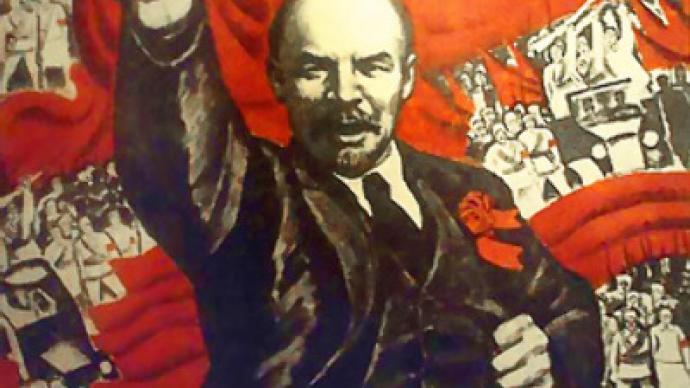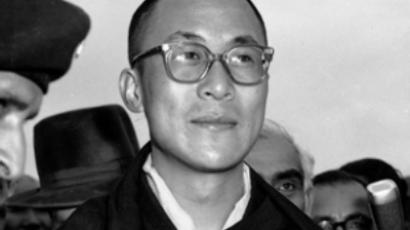10 World’s Greatest Power Takeovers

From Bolsheviks to Islamists.
The Bolshevik October Revolution
In 1917, a crowd of resolute revolutionaries overthrew the Russian government and went on to establish the world’s first Marxist state. In the chaotic days leading up to that October, the Bolsheviks (from the Russian “bolshinstvo” – “majority”) were just one of many groups agitating to bring down the regime. They were led by Vladimir Ulyanov, better known by his alias, Lenin. When the First World War broke out, they found eager supporters among the troops, who had been sent by the Tsar to fight losing battles in the freezing winter. Soon, many frustrated workers had also had enough. On October 25, a blank shot from the “Aurora” cruiser in Petrograd, today’s St. Petersburg, signaled the start of the revolt. The seizure by the Bolsheviks of the Tsar’s residence, the Winter Palace, became the revolution’s defining moment. To gain control of the entire country, Lenin and his backers went on to fight a bitter four-year war with the “Whites”, a loose coalition of those who opposed them. The Soviet Union was eventually proclaimed in 1922.
The Soviet August Coup
Three summer days that shook the USSR. For some time, the Communist Party hardliners had felt challenged by Mikhail Gorbachev’s reforms. In August 1991, with Gorbachev on holiday in the Crimea, they decided to act. The coup came a day before the planned signing of a new union treaty that would recast the USSR as a more loosely-bound connection of sovereign states. With Gorbachev held under house arrest, a group of top officials, headed by his own vice president, ordered tanks into the streets of Moscow. The Russian parliamentarians, led by Boris Yeltsin, the newly elected leader of the USSR’s Russian Republic, rallied popular support against the coup. In an iconic move, Yeltsin mounted a tank, as soldiers refused to disperse the protesters. An exhausted Gorbachev returned to Moscow to find that power had swung over to Yeltsin. In December, the leaders of Russia, Ukraine and Belarus secretly signed accords dismantling the USSR. Faced with the inevitable, Gorbachev resigned on December 25, 1991.
The Orange Revolution
In autumn 2004, thousands of Ukrainians poured into Kiev’s Independence Square. Amid claims that the November presidential poll was rigged, they demanded victory for their man – Viktor Yushchenko. The battle was closely fought between the pro-Western Yushchenko and the sitting Prime Minister Victor Yanukovich, who didn’t hide his pro-Russian stance. Yanukovich was initially declared victorious. Convinced that the election was stolen from the rightful winner, Yushchenko’s supporters took to the streets. It was dubbed the Orange Revolution, with the protesters all wearing something orange – the color of Yushchenko’s Our Ukraine party. Yanukovich was forced to back down and lost the December re-run of the poll. But while Yushchenko’s euphoric backers celebrated in Kiev and Ukraine’s West, rallies ripped through the Russian-speaking, industrialized East – Yanukovich’s stronghold. Some media and analysts claimed that, far from being a spontaneous drive for democracy, the Revolution was a coup financed by the West. Since taking office, Yushchenko has kept to his promised course of steering Ukraine towards the EU and NATO.
The Rose Revolution
It was dubbed to Rose Revolution. In November 2003, crowds took to the streets of Georgia’s capital Tbilisi to challenge the results of a parliamentary election that they believed was flawed. They demanded the resignation of Eduard Shevardnadze, a man who had ruled Georgia for more than 20 years, as its Soviet-era Communist Party chief and its longest-serving post-independence president. Many protesters carried long-stemmed roses as a symbol of their peaceful intentions. The wave of rallies reached its peak on the day the new parliament, seen as illegitimate by the demonstrators, held its opening session. One of the opposition leaders, the US-educated ambitious firebrand Mikheil Saakashvili, led his supporters to the parliament building. They pushed their way through the thick wooden doors and interrupted a speech being given by Eduard Shevarnadze. The moment Shevardnadze’s bodyguards bundled him out by a back door, power changed hands in Georgia. The elite military units refused to support the government. Shevarnadze resigned and Mikheil Saakashvili was elected president in January 2004.
The Velvet Revolution
On November 17, 1989 riot police crushed a peaceful student demonstration in Prague. It sparked six weeks of protests that would topple the Communist government in Czechoslovakia. The bloodless revolt became known as the Velvet Revolution. By then, things had long been ripe for change. Mikhail Gorbachev had launched his policies of “glasnost” (openness) and “perestroika” (economic restructuring), loosening the USSR’s grip on the Warsaw Pact states. The Soviet-style regimes in Central and Eastern Europe began to wobble. In the run-up to November’s riots, the Czechs witnessed the drama that played out in Prague’s West German Embassy. Trying to thread their way to the West, thousands of East Germans spent months camped in its muddy garden. The Czech authorities eventually gave in, letting them pass directly to West Germany. Then the Berlin Wall fell. By the end of November, amid ongoing rallies, Czechoslovakia’s parliament stripped the Communist Party of its leading role. In June 1990, the country’s first democratic parliamentary election since 1946 was held.
The Islamic Revolution
In a rapid and dramatic upheaval, the 1978 revolution transformed Iran from a monarchy to an Islamic state. As Shah Mohammad Reza Pahlavi was ousted, the revolt caught much of the West by surprise, toppling a regime thought to be guarded by a generously financed army and security services. The revolution was dominated by one man, Ayatollah Khomeini, who came to prominence by boldly criticizing the Shah’s secularism and ties with the US. In 1964, Khomeini was banished from the country, but he wasn’t forgotten. In exile, he became the acknowledged leader of the opposition. There, Khomeini also shaped his revolutionary doctrine, attacking the regime’s legitimacy and calling for a clerical state. In 1978, huge street riots demanding the abdication of the Shah paralyzed the country. The protests were drawing blood, but the monarchy was crumbling. The Shah had no one to turn to but Washington for help, with no tangible results. In January 1979, he fled Iran. Two weeks later, Khomeini returned home in triumph. In April, Iran officially became an Islamic Republic, with Khomeini as Supreme leader.
The American Revolution
It was the war that made America. Known as the American Revolution, it broke the thirteen North American colonies away from Britain’s rule and created the United States. The “shot heard round the world” fired at Lexington on April 19, 1775 started the war for American independence that ended eight and a half years later with the Treaty of Paris. From the outset, the colonies were, by and large, allowed to develop with little interference from Britain. Things changed in 1763, when London moved to tighten political control over the colonies, make them pay for their defense and return revenue to the mother country. The measures proved extremely unpopular. In April 1775, shots were exchanged by colonials and British soldiers and a revolution began. The following year, the colonies adopted a Declaration of Independence, establishing the United States of America. Things first looked grim for the ill-trained, poorly- armed American volunteers, but an alliance with France evened the strengths somewhat. Several decisive victories over the British led to peace, as the Treaty of Paris formally recognized the new nation in 1783.
The French Revolution
On July 14, 1789 a mob of angry Parisians stormed the Bastille. After several hours of fighting, the infamous prison fell, marking the start of the French Revolution. The Seven Years’ War, involving all major European powers, and the American Revolution across the ocean made the Western world a volatile place. The warfare took its toll on the French treasury, plunging the country into an economic crisis, while the King’s absolute power became increasingly questioned. Amidst the ongoing unrest, with some calling for constitutional monarchy and others wanting to do away with it altogether, the royal family tried to flee Paris in June 1791, disguised as servants. Recognized and arrested, they were paraded back to Paris. France was proclaimed a Republic; and Louis XVI was brought to trial and subsequently executed on January 21, 1793. The so-called Reign of Terror followed, ruthlessly killing anyone deemed an enemy of the revolution. The guillotine became the symbol of the bloodshed. In 1799, a rising star of the army, Napoleon Bonaparte, staged a coup, effectively becoming France’s next leader and, ultimately, Emperor.
Chilean Coup d’Etat
In autumn 1973, the world’s first democratically-elected Marxist head of state was overthrown. Chilean president Salvador Allende was replaced with General Augusto Pinochet, whose anti-communist military dictatorship lasted until 1990. Opposition to Allende had been brewing for months. After his election to power in 1970, his attempts to re-structure the nation’s economy led to runaway inflation and food shortages. The crunch came in the early hours of September 11, when Chilean armed forces took control of most of the country. With Allende rejecting an initial demand for his resignation, the presidential palace in Santiago was bombed and bloody fighting broke out in the city. Allende died during the coup. An official announcement declared that he had committed suicide with an automatic rifle, purportedly the one offered to him by Fidel Castro. The US role in the coup remains controversial. Files declassified during the Clinton administration detailed decisions and operations to undermine the election of Salvador Allende in 1970, and to promote the military coup that brought Augusto Pinochet to power.
The Cuban Revolution
On July 26, 1953, a small group of poorly-armed revolutionaries led by Fidel Castro stormed the Moncada Barracks in the city of Santiago de Cuba. The attack is widely seen as the launch of the Cuban Revolution, which ended with the ousting of General Fulgencio Batista’s regime. The assault itself proved a tremendous failure, with nearly all of the rebels having been killed or captured. At his trial, Fidel Castro famously stated: “History will absolve me”, and was surprisingly released after two years. He went into exile in Mexico, where he trained an army for a guerrilla war against Batista. On December 2, 1956, Castro and some of his supporters returned to Cuba. Their numbers were quickly slashed by Batista’s soldiers, but many made their way into the mountains. As the revolutionary movement grew, Batista’s army was unprepared for the guerrilla style of warfare, and his troops were depleted by desertions and surrenders. Eventually deeming the situation hopeless, Batista fled the country on January 1, 1959. After a long victory march, Castro entered Havana several days later, bringing his military triumph to a close.













